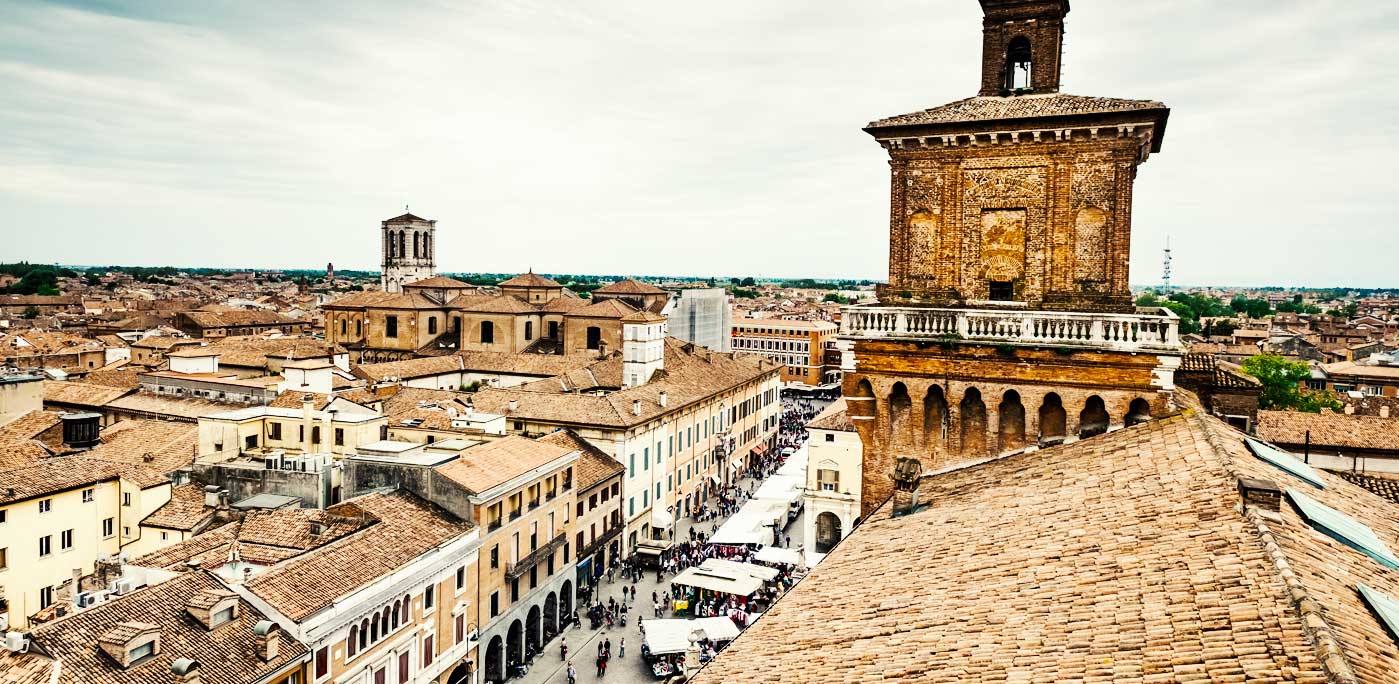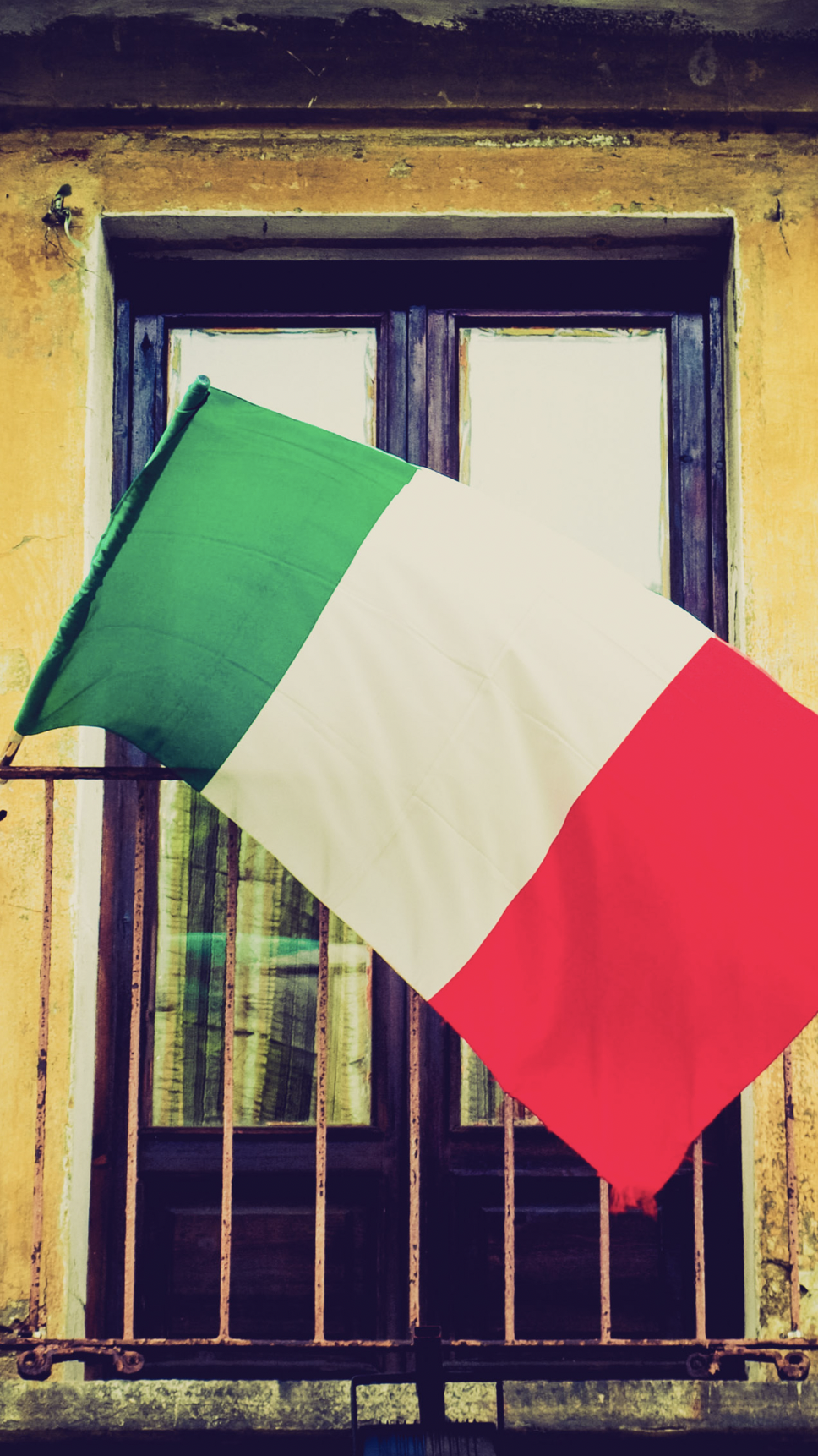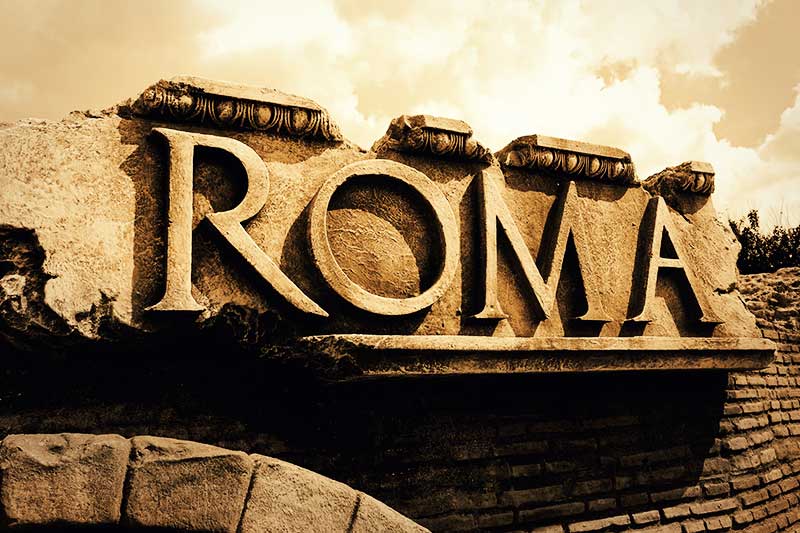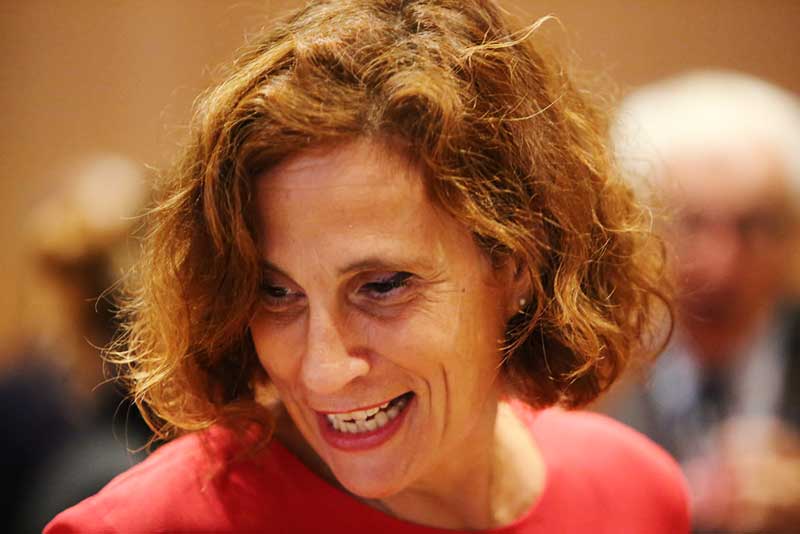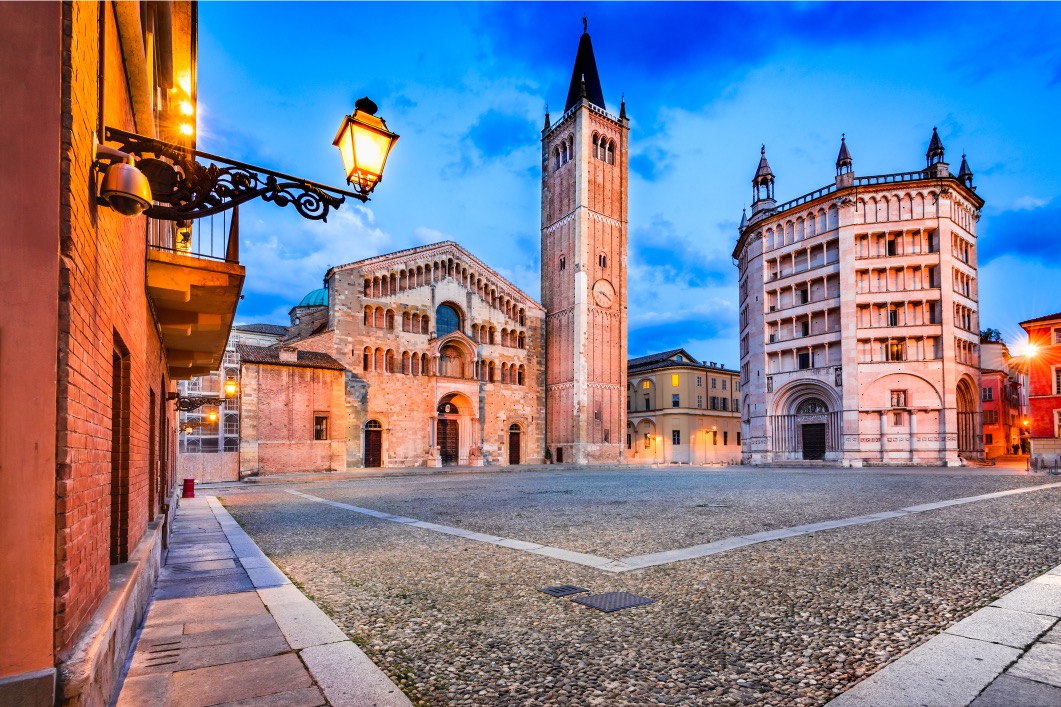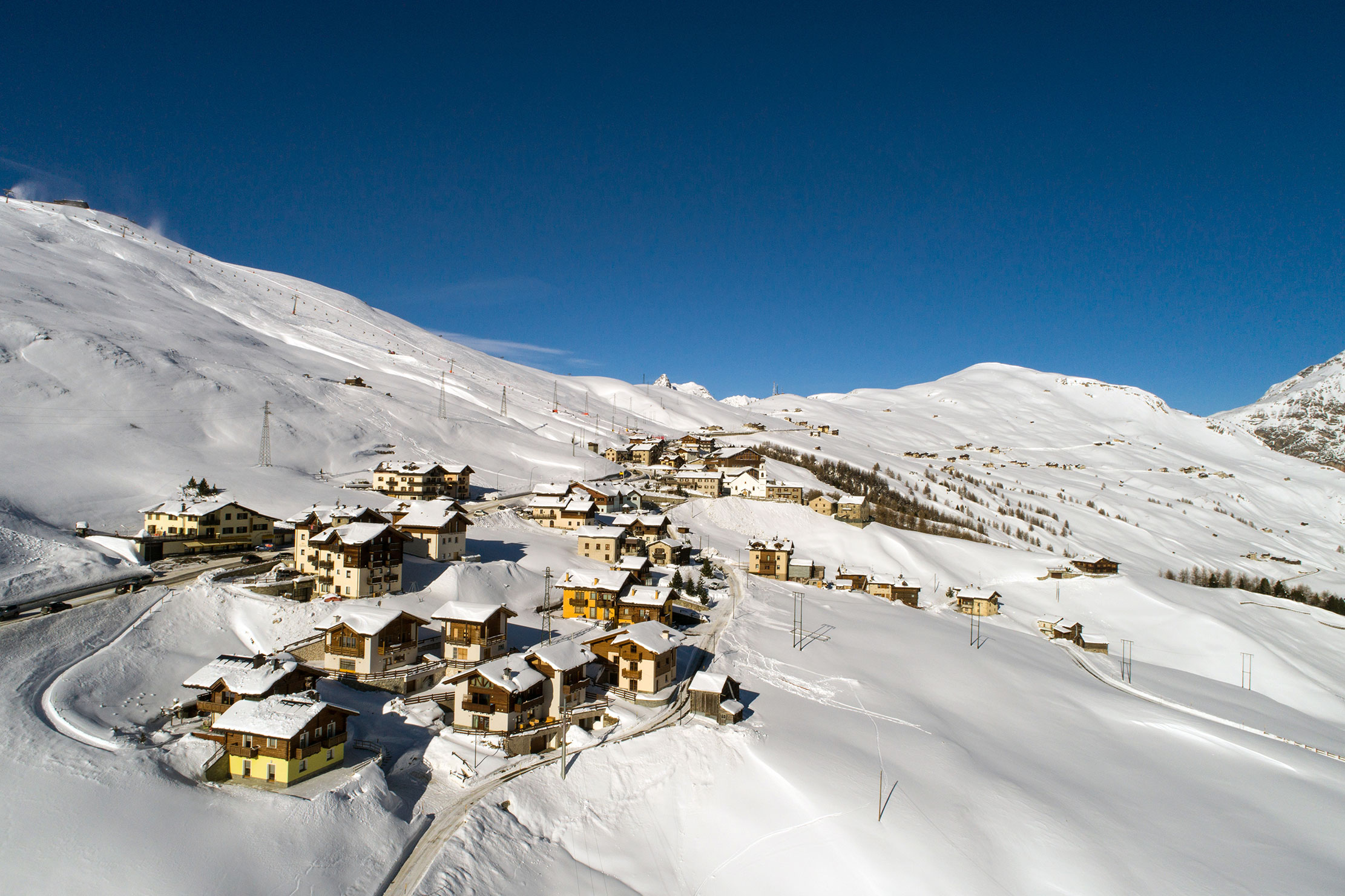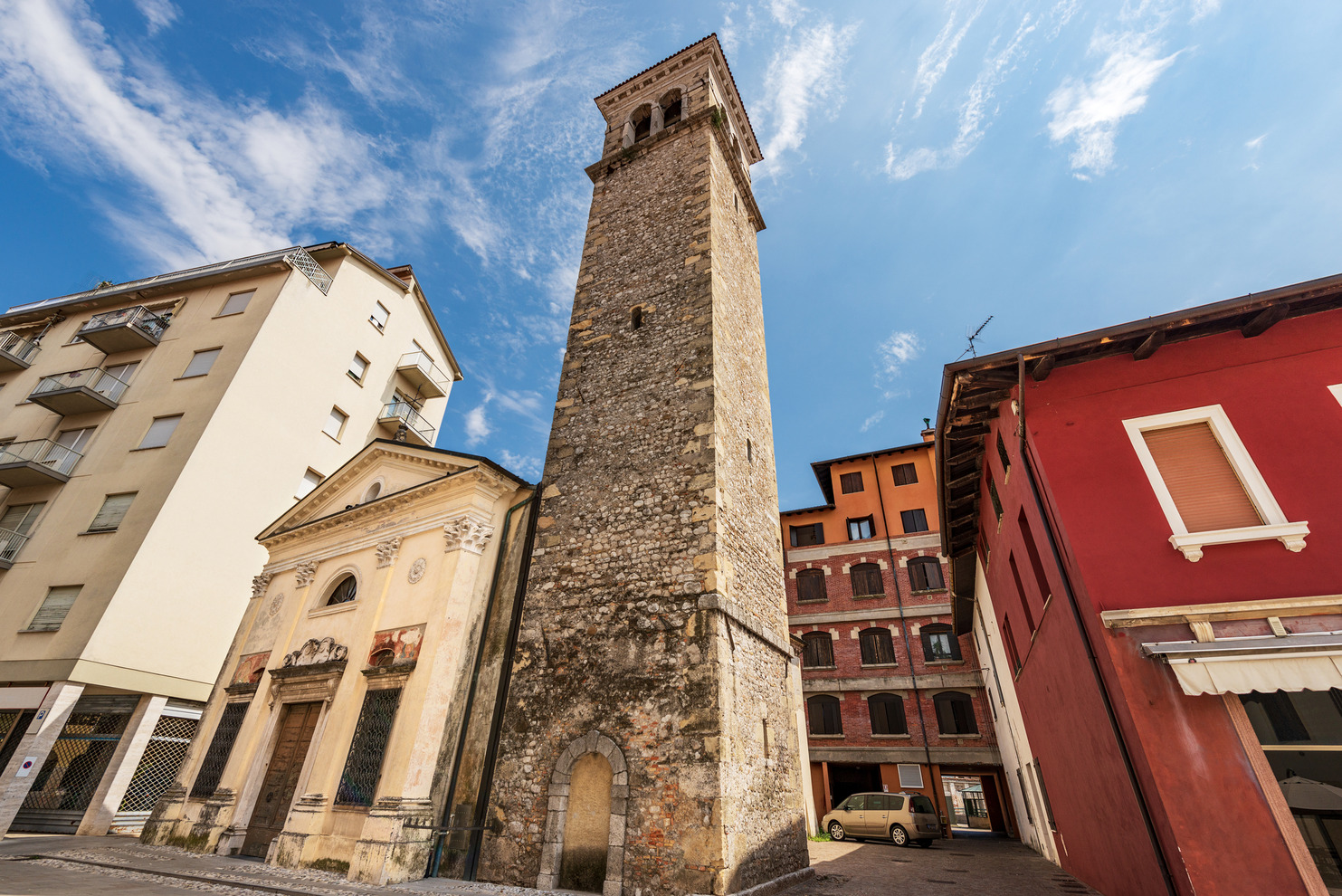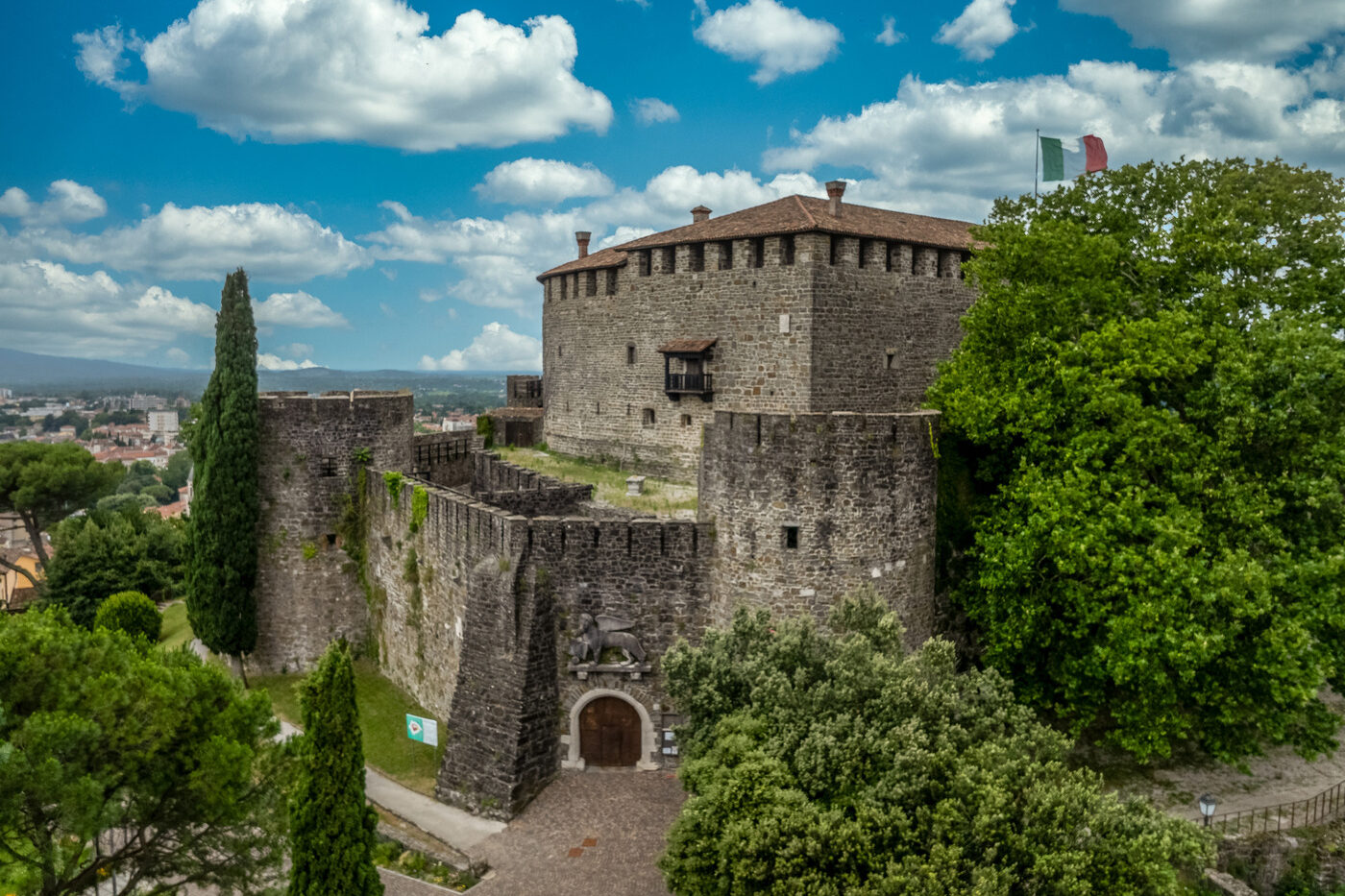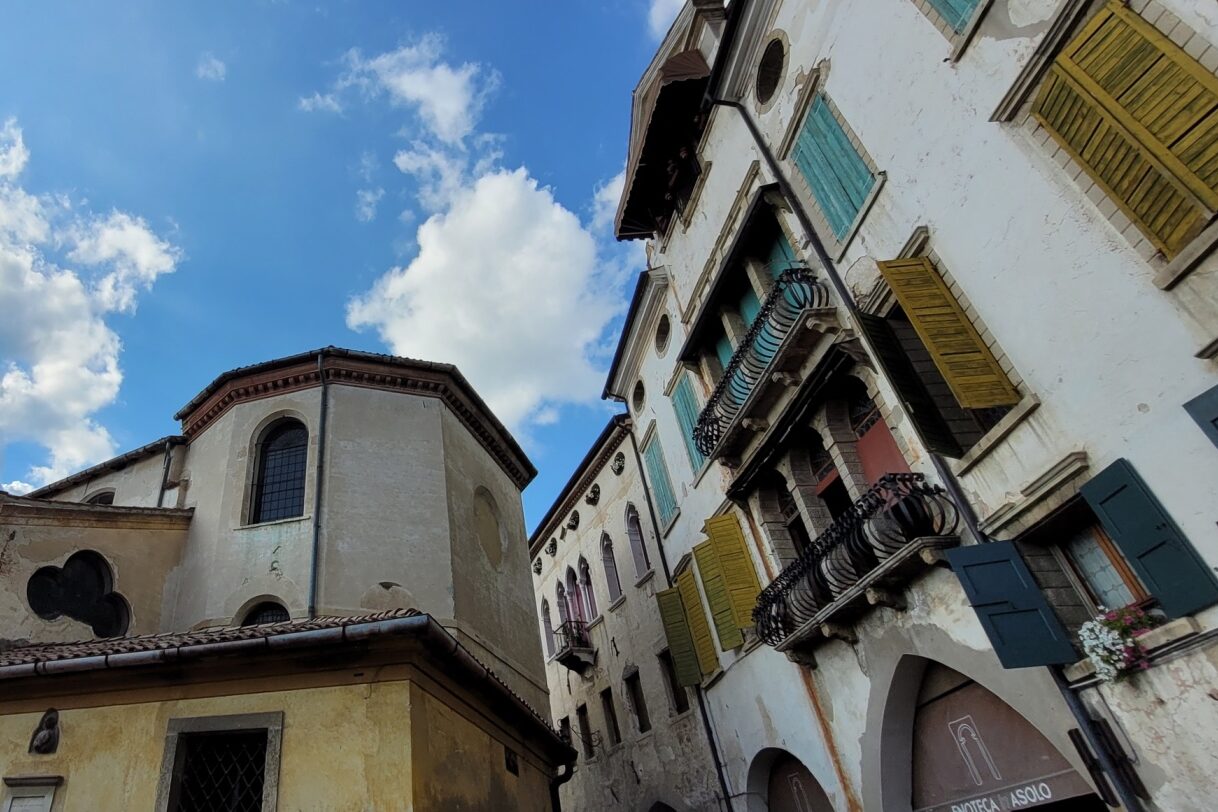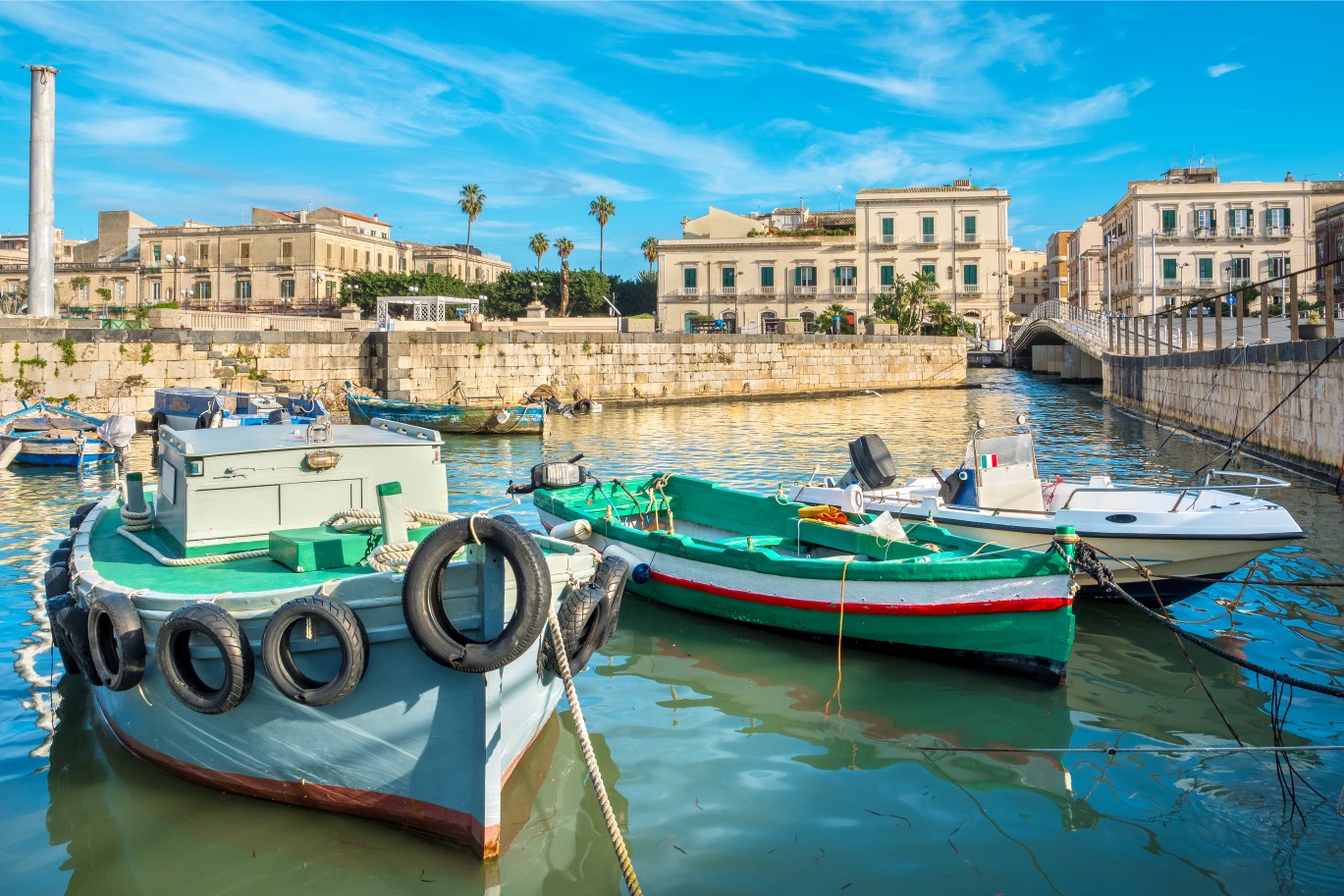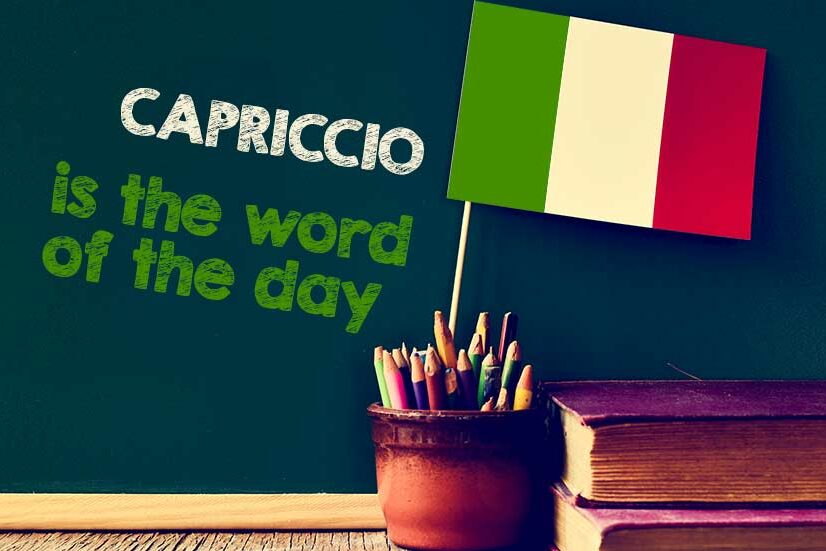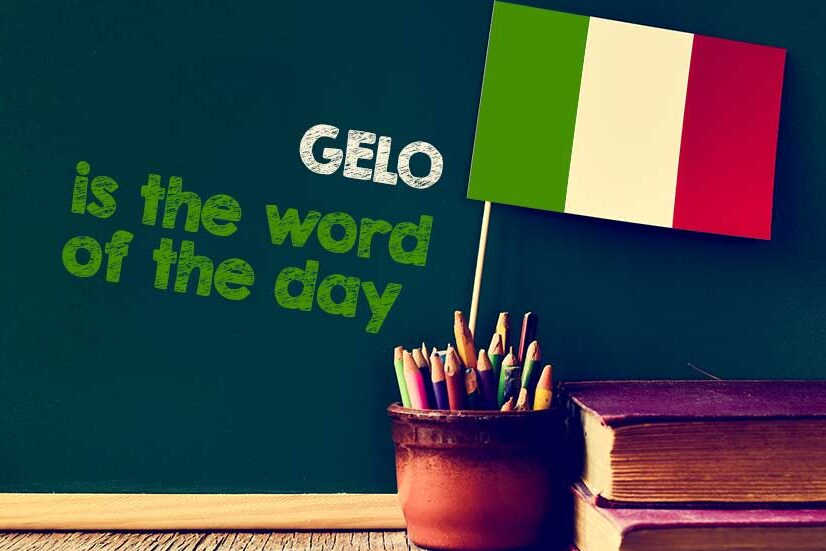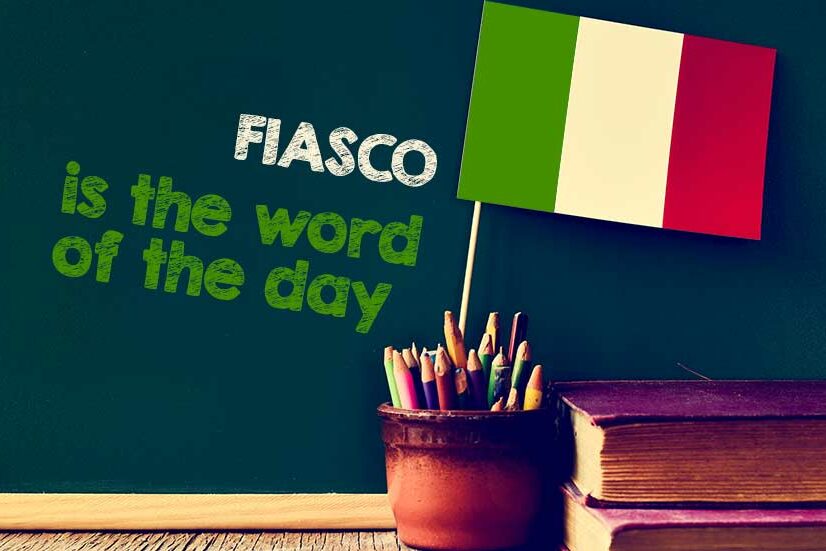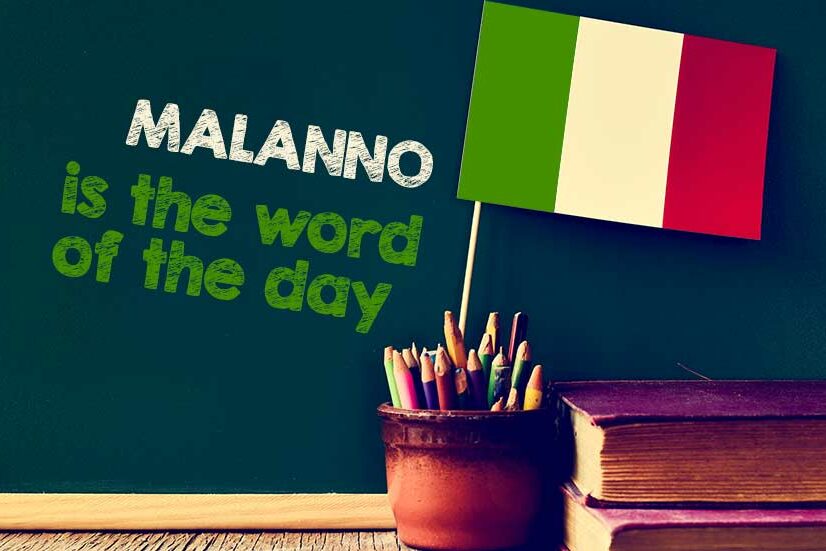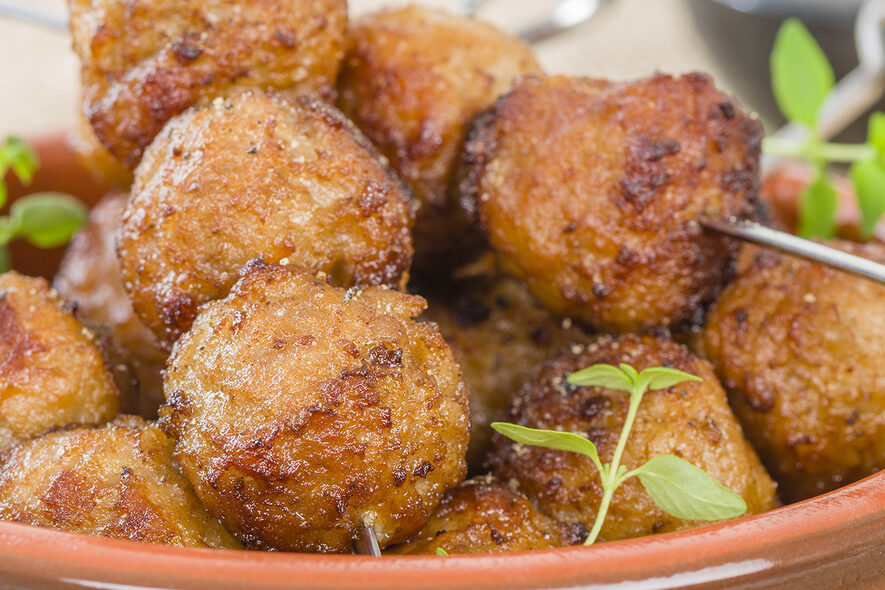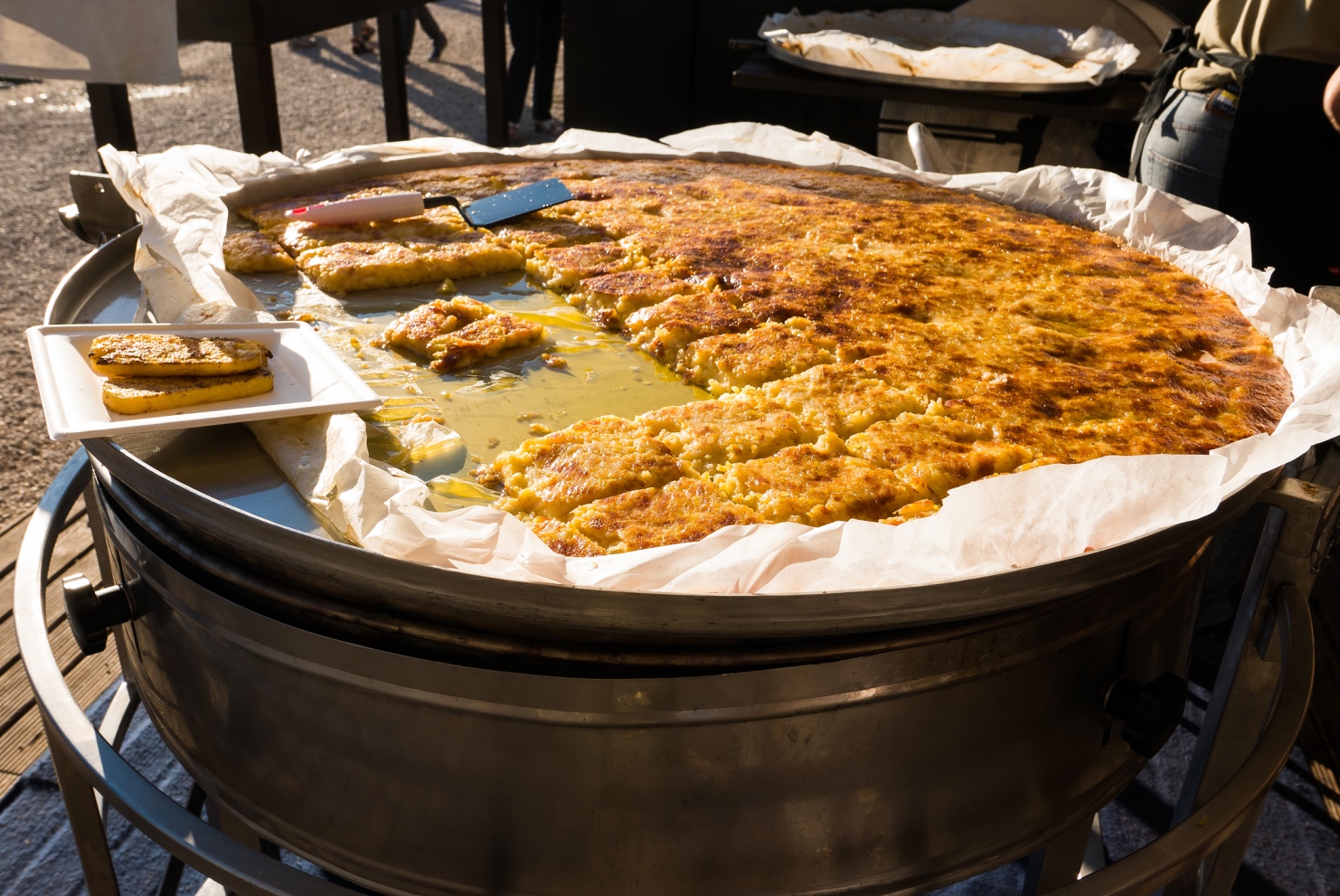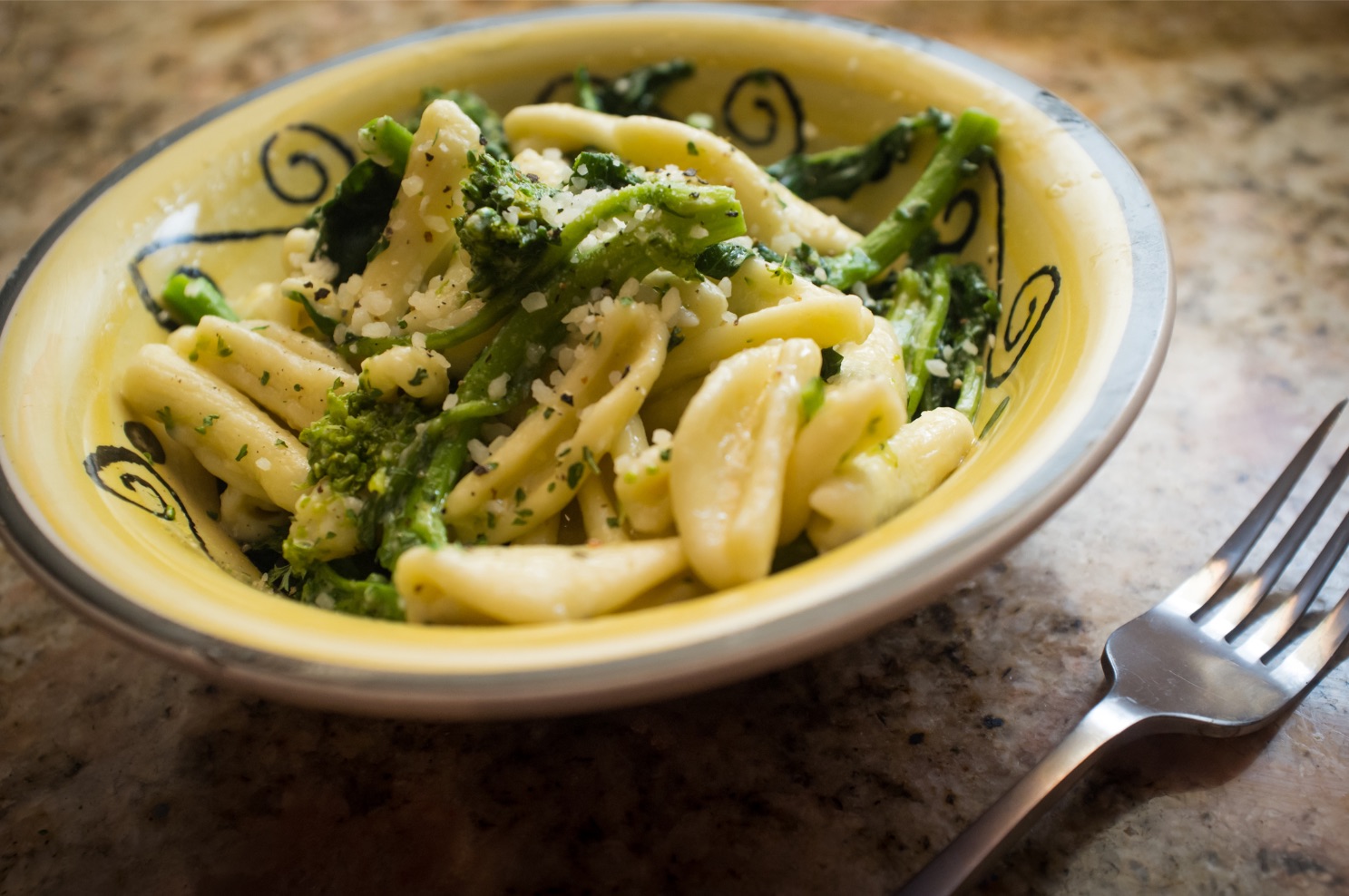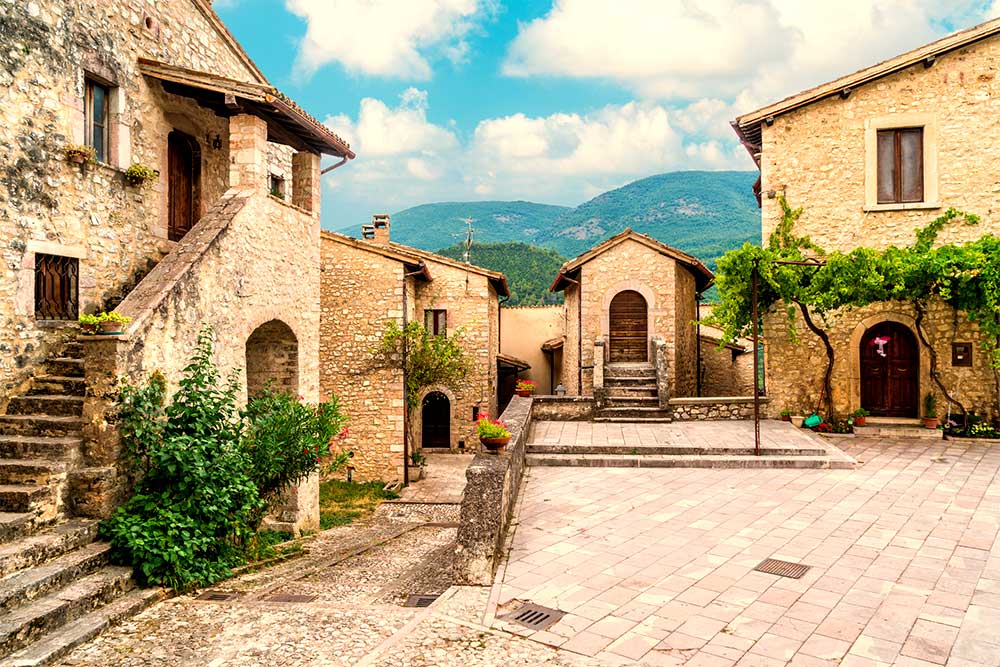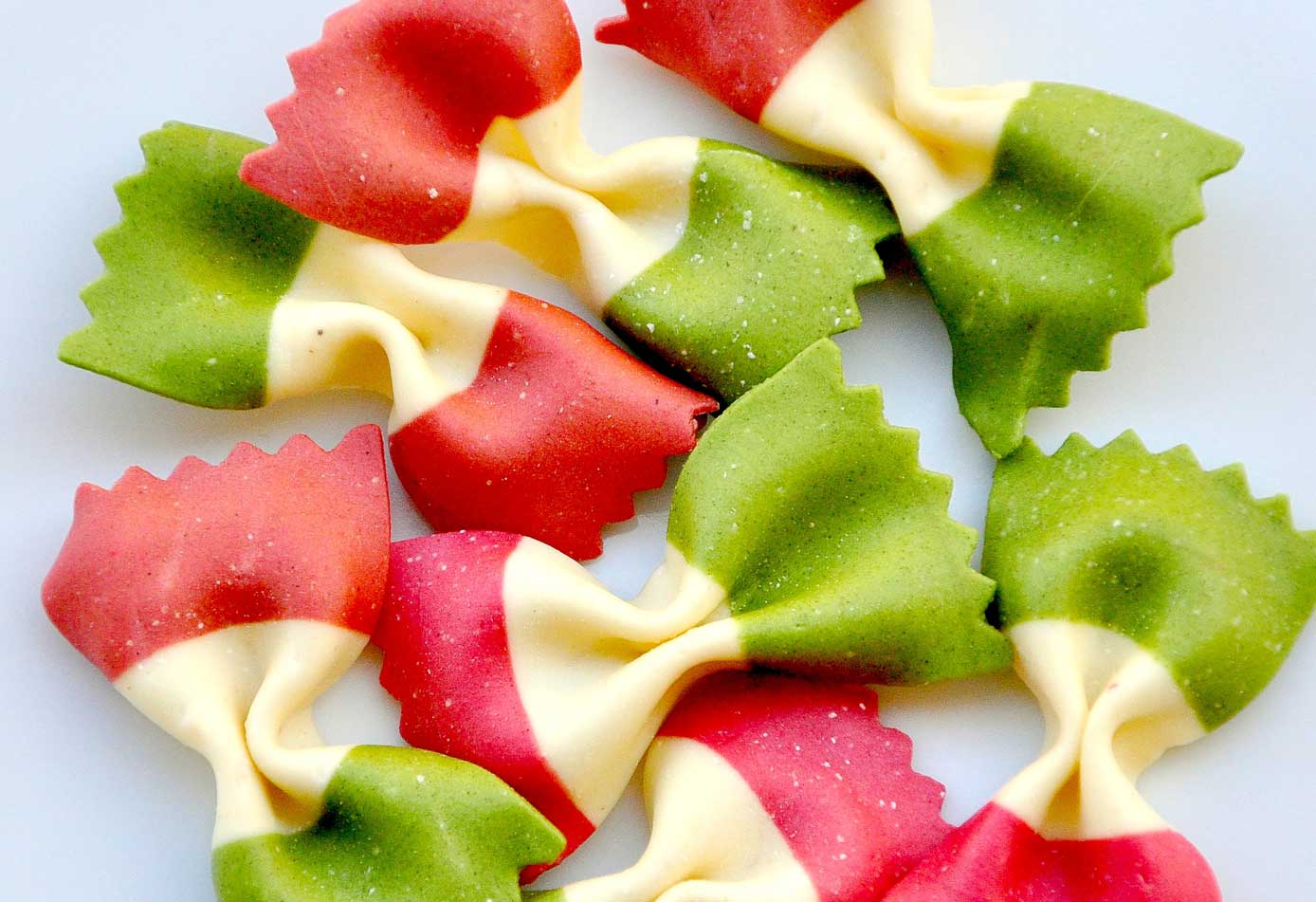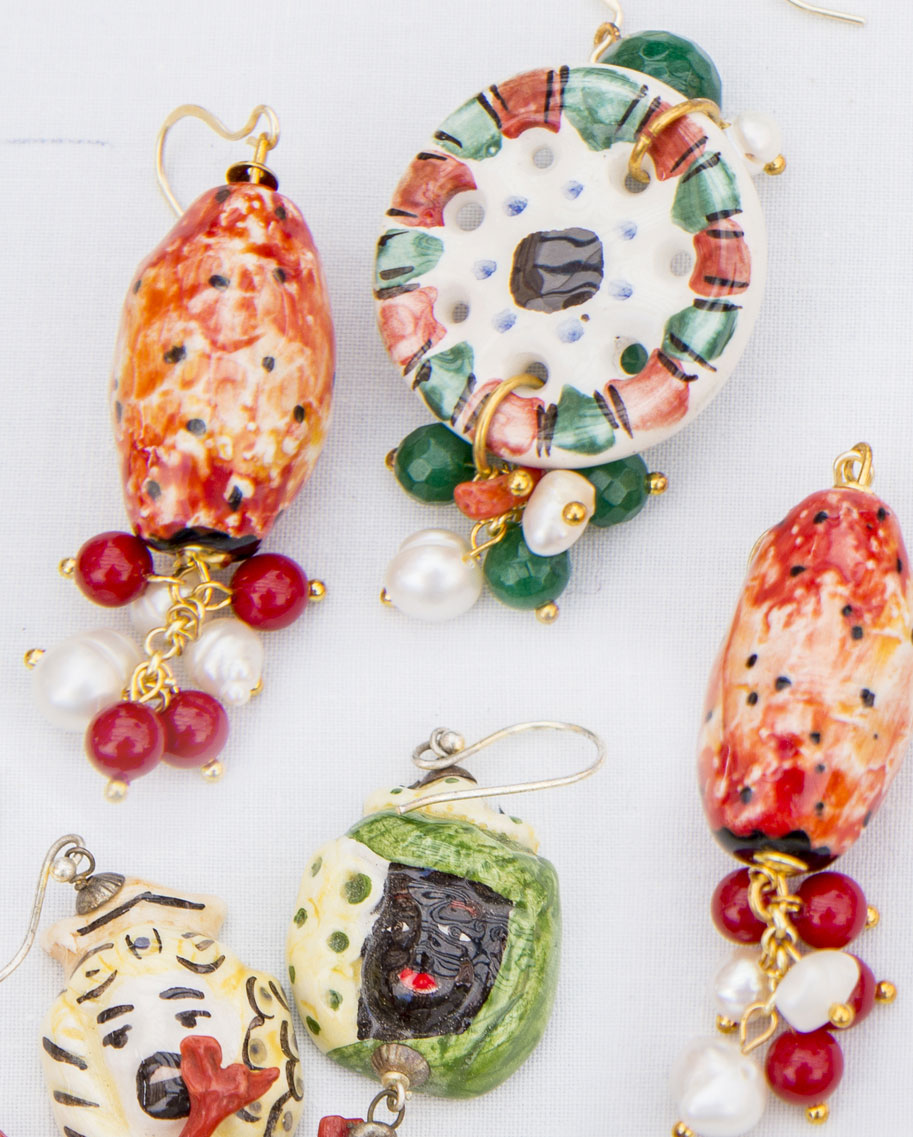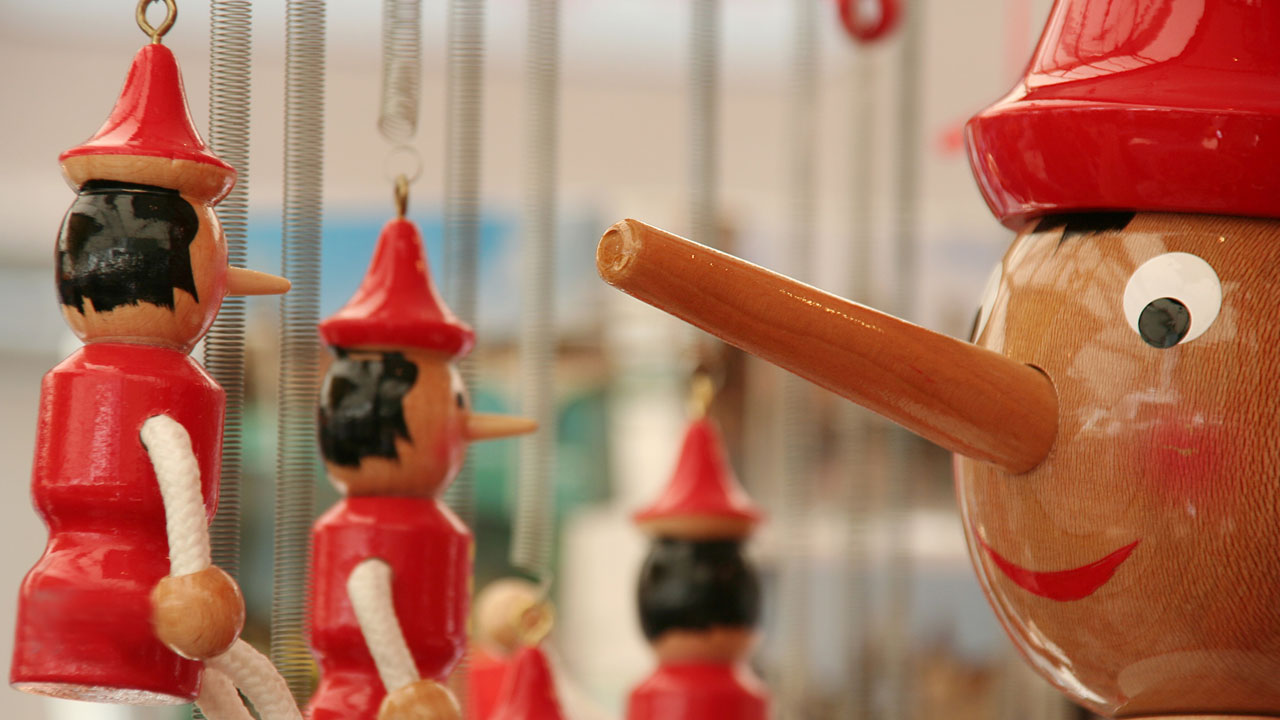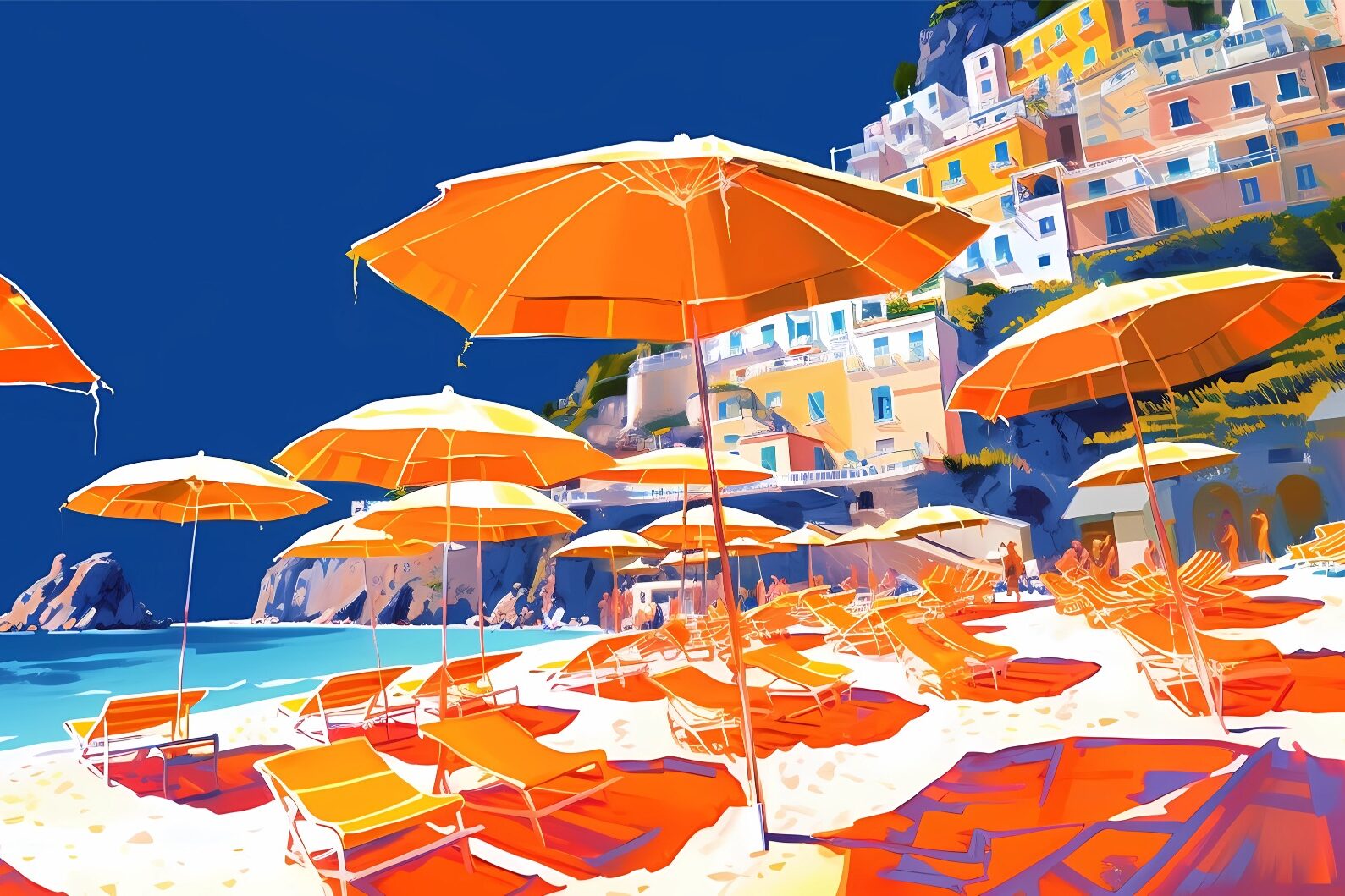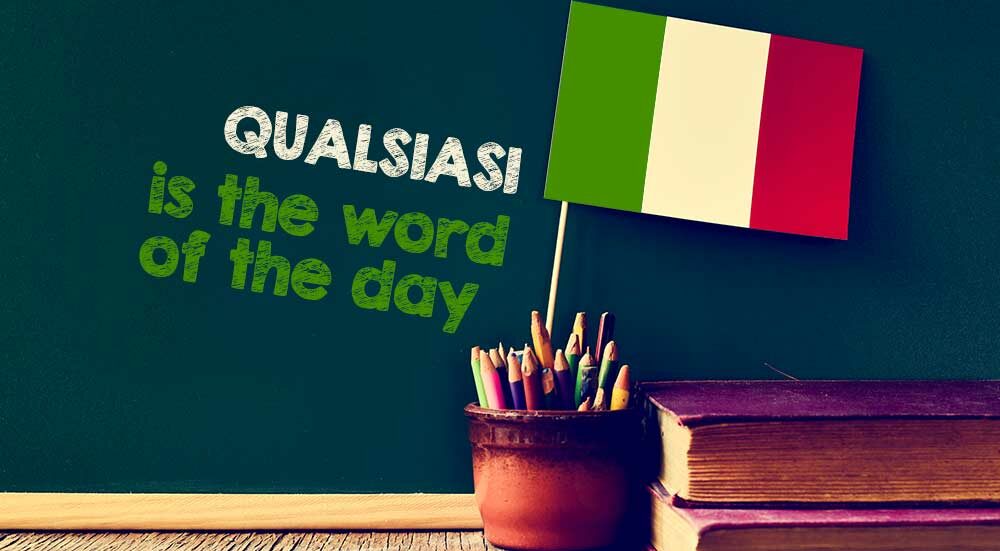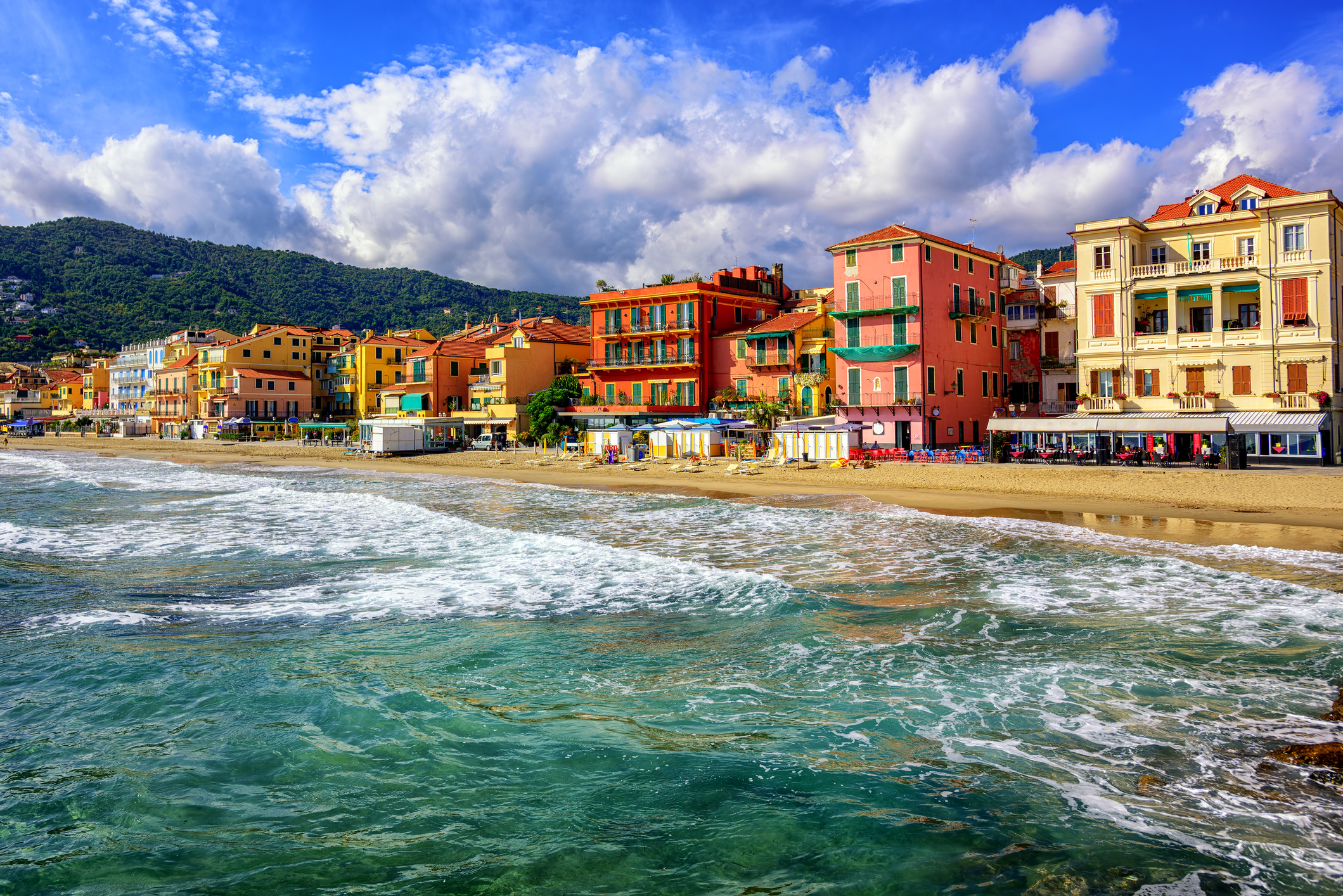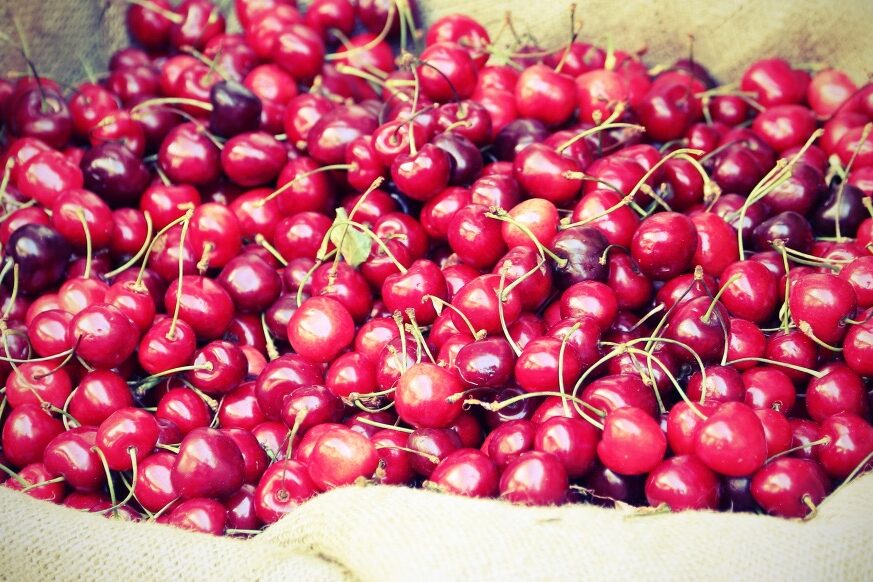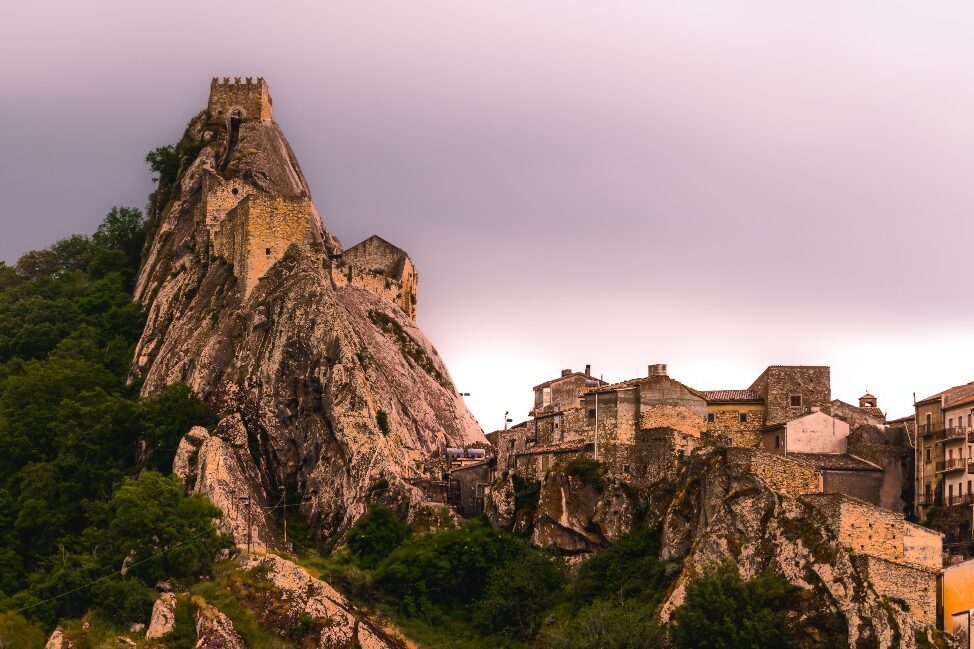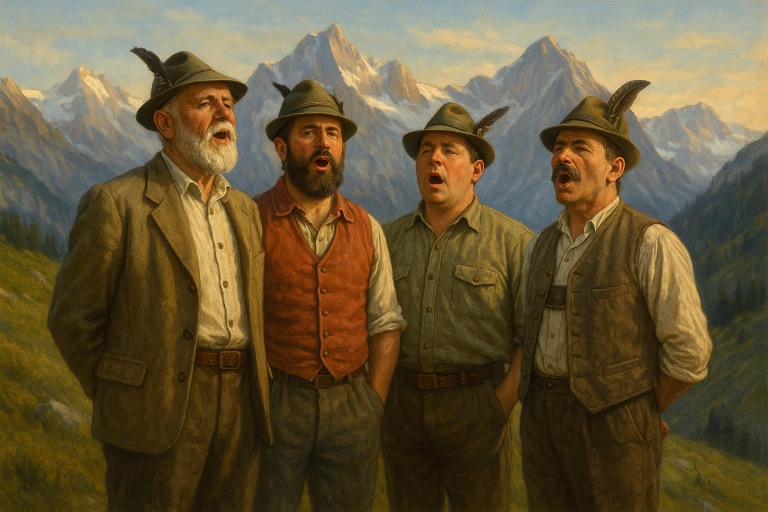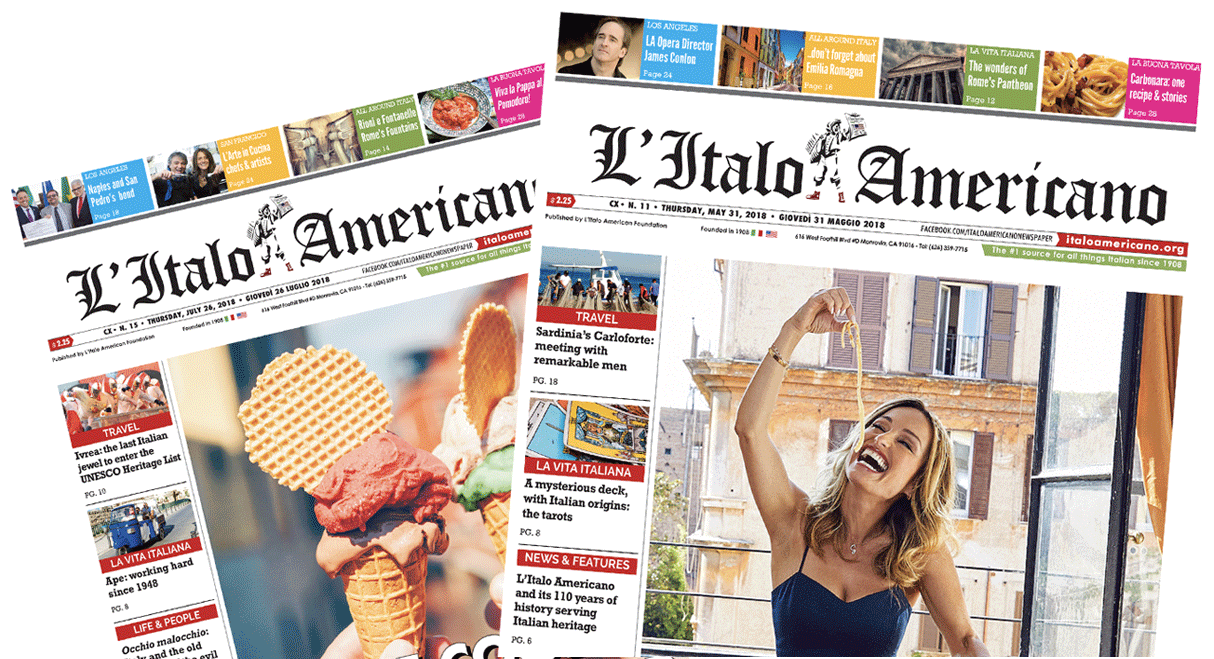Ferrara, loderò le tue vie piane/grandi come fiumane,/che conducono all’infinito chi va solo col suo pensiero ardente: I shall praise your flat streets/as large as rivers/that lead to infinity those walking alone with their fiery thoughts. That’s how our Gabriele d’Annunzio, patriotic poet and high representative of Italy’s Decadentismo described Ferrara, his città del silenzio. A city of silence, because of that breathtaking beauty of hers, a beauty leaving you speechless, more prone to reflection than boisterous banter.
Ferrara, capital of the homonymous province in Emilia Romagna, home to about 130,000 people and UNESCO Heritage Site in its entirety, is sheer mirror of how utterly modern and profoundly revolutionary the Renaissance has been for Humanity.
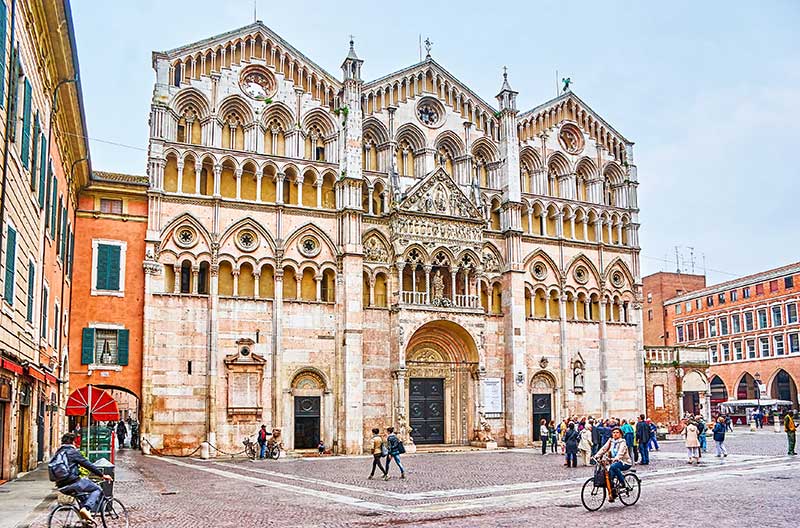
The beautiful northern frontage of Ferrara Cathedral built in Romanesque style is a symbol of the city, on April 30 in Ferrara
Ferrara: what you see today, what D’Annunzio celebrates in the verses opening our short introduction to the town, is what the Este of 500 years ago conceived, created, nurtured, offering to the world the first, true example of urban game-changing modernity since imperial Rome.
The Este family, culture lovers and protectors of the arts, placed their hometown at the heart of Europe: eclectic and lively, open and welcoming Ferrara, with the grandiosity of her castle and the liberal atmosphere of her university, became home to the great and talented, from Leon Battista Alberti to Jacopo Bellini, from the divine Piero della Francesca to the tenebrous Andrea Mantegna and that’s before mentioning her poets, Matteo Maria Boiardo, Ludovico Ariosto and Torquato Tasso — underneath Piazza Sant’Anna, there’s still the cell where he was incarcerated when he fell into madness. Even a great of science, Nicolò Copernico, found with the Estes, in their city, a place of respite and research.
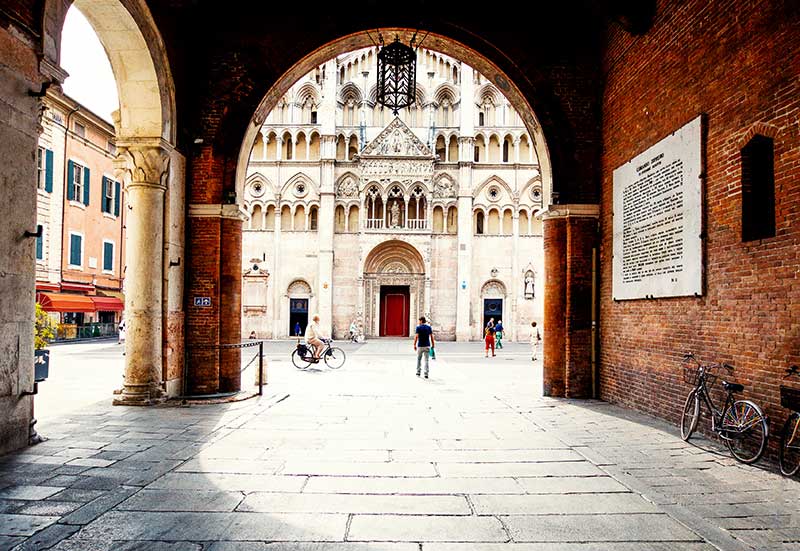
Piazza Trento e Trieste, and a view of the Cathedral (Ⓒ: Dreamstime)
Ferrara has been so pivotal for the cultural development of Italy and Europe it’s almost impossible to believe it isn’t better known, but alas, this is the fate of so many places in the country where the gods wanted Rome, Florence and Venice to be. Yet, Ferrara is precious black opal in a sea of diamonds, the rarest find of them all. And it has so much to offer.
The capital of modern Europe holds a secret in its name
We don’t know much about the name “Ferrara,” but historians are quite certain it isn’t —for a change — of Roman origins. Indeed, it seems that Ferrara was, just like another very famous city in Italy, Venice, born in tempore Gotthorum, that is, at the time of the Goths, after the Fall of the Western Roman Empire. This makes of Ferrara a younger sister to some other important local towns like Ravenna, which of the Roman Empire, albeit only for a brief time, had been also capital.
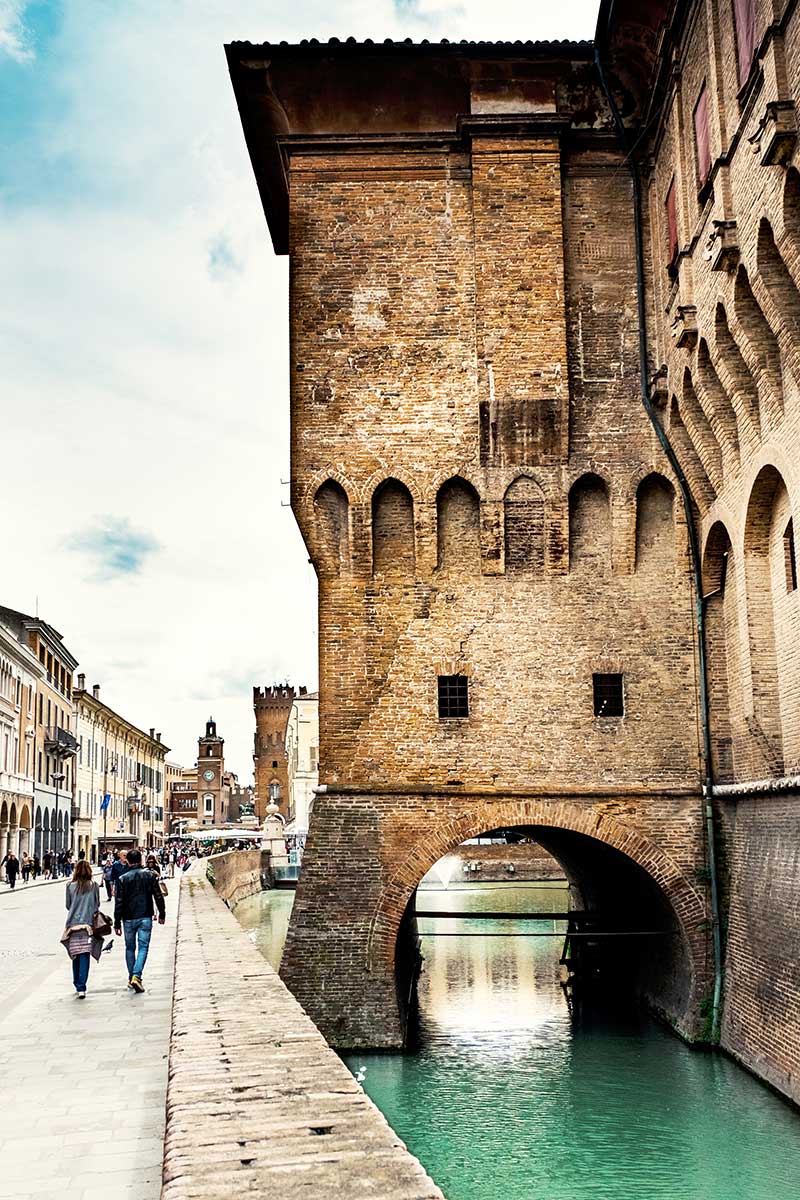
Ferrara, the first modern city in Europe, is a place to discover (Ⓒ: Dreamstime)
A popular legend says Ferrara, much like Rome according to Virgil, had Trojan origins, because it was a young escapee from the war against the Achaeans, Marcus, along with a girl called Ferrara, who funded here a village. Some even believed the young girl of the legend is the same depicted on the right-side door of Ferrara’s cathedral, known commonly as Madonna Frara. As fascinating and romantic as the whole tale may be, it ’s probably just that, a tale.
There are, however, some more realistic options: for instance, it’s said “Ferrara” may come from “ferro,” iron, which was widely worked in the area or from “farro,” spelt, the cereal favored by the Romans and quite popular in the area. Ferrara would then come from Farraria, or the land of “farro.” All these, are only suppositions. What we truly know is that Ferrara is named for the first time as episcopal see in the 6th century and that in the 7th Castrum Ferrariae, more commonly known today as the Castrum Bizantino, the oldest part of town, was founded.
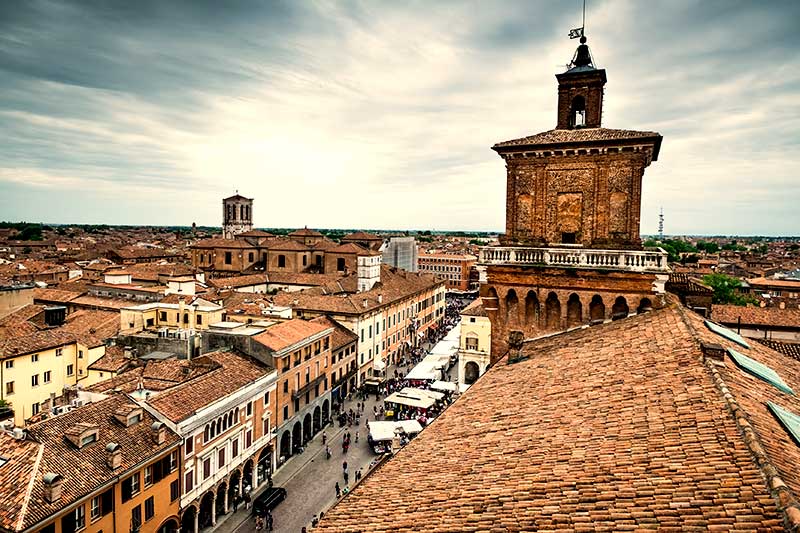
A view of Ferrara, the first truly modern European city (Ⓒ: Dreamstime)
A city of the Renaissance
The heart of Ferrara, the place where all explorations should start from, is its breathtaking central square, Piazza Trento e Trieste. Its center piece is, without a doubt, the Cattedrale di San Giorgio, immense jewel of Romanic architecture, embellished and enriched by gothic, Renaissance and baroque additions. Its bell tower, ideated by Alberti, is unfinished, but remains a beauty nevertheless. If you visit Ferrara these days, you may not be able to see the cathedral in all its glory, though, as its façade is under restoration: a little price to pay, if we want to keep our patrimony at its best. Always in the square is Palazzo Civico, restored during Fascismo, yet another example of the town’s incredible architecture.
If you ask any Italian about Ferrara, though, they are likely to mention one place in particular, a palace exotically named Palazzo dei Diamanti, or the Palace of Diamonds, named after its beautifully peculiar façade, made up with 8,500 pyramid shaped blocks where light and shadow play intricate illusions reminiscent of those produced by diamonds themselves. Palazzo dei Diamanti is home to Ferrara’s Pinacoteca and is located in Corso Ettore d’Este.
Speaking of the Este family, we can’t forget their castle, where they had resided since 1476, famous for the Via Coperta, an elevated corridor created to join together the older part of the abode, today’s Palazzo del Municipio, to the newer one.[/caption]
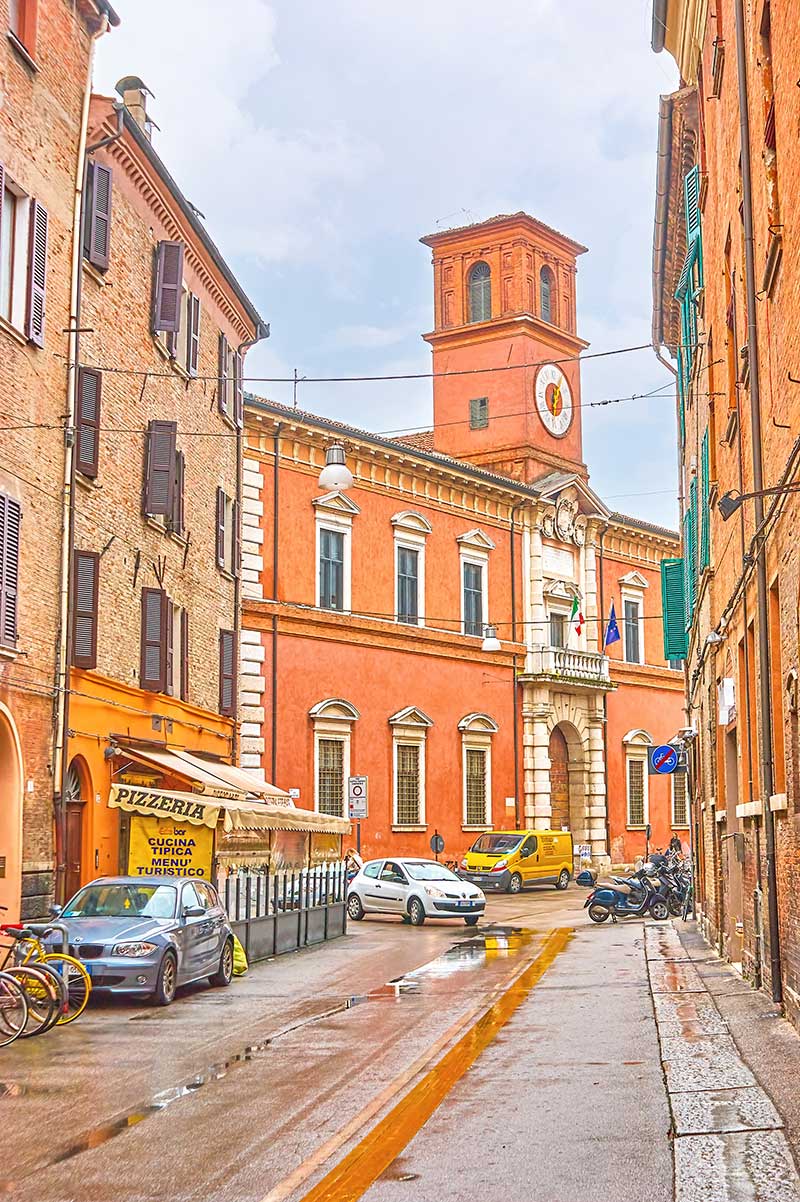
The “Addizione Erculea” and Ferrara as capital of Europe
But why is Ferrara known, and rightly so, as the first truly European city? It all comes down to the urban development that took place between the end of the 15th and the beginning of the 16th century, under the supervision of architect Biagio Rossetti, inspired and directed by the modernizing vision of Ercole I of Este, who wanted to bring his city out of the Middle Ages and straight into a new era of discovery and creativity. Following elements of ancient Roman city planning created by Vitruvius, Rossetti and Ercole I created a new, open, airy Ferrara, made of large avenues and piazzas, grand palaces and green spaces that perfectly merged into the existing, medieval urban fabric of the town. It was Arianuova (New Air), and this is where you’ll find the above mentioned Palazzo dei Diamanti, for instance, as well as Palazzo dei Turchi di Bagno and Palazzo Prosperi Sacrati.
This is Ferrara, the first modern city in the world: the place where old and new meet, where Humanity is at the heart of all thought and creativity. Ferrara, home to Torquato Tasso, father of the Gerusalemme Liberata (Jerusalem Delivered), widely and without discussion consider the first modern work of European Literature.

Last but not least: food!
Of course, how can we be in Emilia-Romagna and not even dedicate a small paragraph to food? Emiliani-Romagnoli are known for their epicurean attitude to life and their cuisine is mirror to it everywhere in the region. Ferrara proudly counts among her favorite dishes the cappellacci di zucca, a type of small pumpkin ravioli, which appeared on the Estes’ table around 1584. The city is also very proud of its coppia, a type of bread whose production has been following very strict regulations since the 16th century. Every Christmas, as everywhere in Emilia-Romagna (and many other areas of Italy), Ferrara favors cappelletti, those little tasty morsels of pasta filled with meat we love to eat with chicken broth. But all Ferraresi will tell you especially about their salama al sugo, the town most glorious secondo, a type of insaccato (like a salame), which is served hot. Among Ferrara’s most typical desserts we have panpepato, and one of Italy’s most curious cake-like delicacies, zuppa Inglese, a mix between a tiramisù and an English trifle, whose origins and history may well become, believe me, the subject of an another interesting article!
